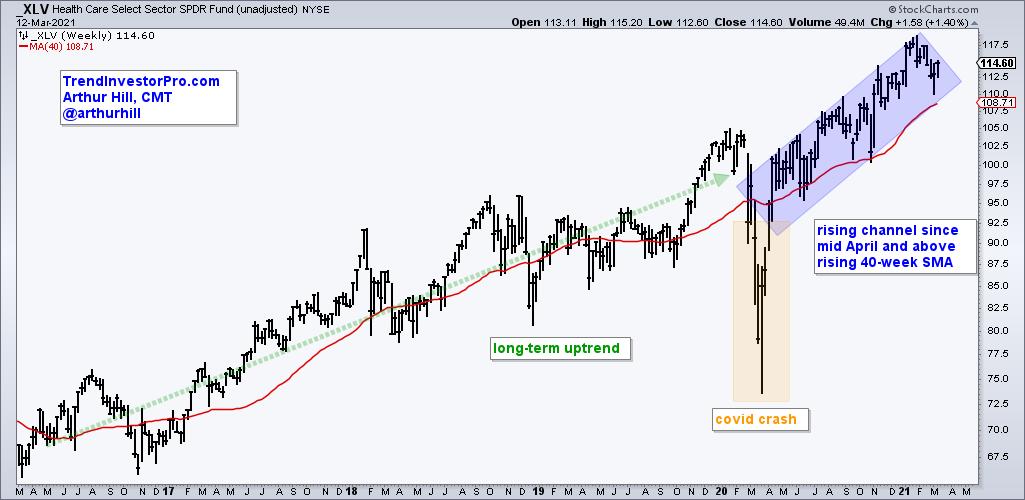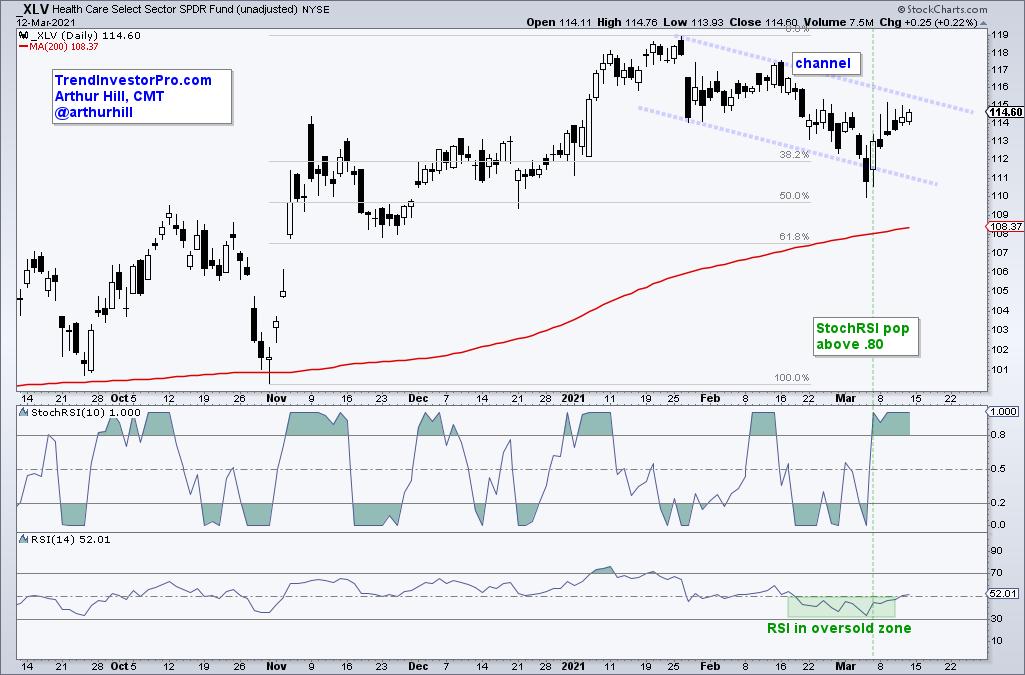As its name suggests, multiple timeframe analysis looks at two or more timeframes to find a setup. Typically, the longer timeframe is used to define the long-term trend and set the trading bias. The shorter timeframe is then used to find setups in harmony with the bigger trend. Nothing is foolproof, but this technique can keep you on the right side of the bigger trend and improve your odds. Let's apply some multiple timeframe analysis to the Healthcare SPDR (XLV).
The first chart captures the long-term trend with weekly bars over the last five years. There is a five year uptrend with pullbacks, consolidations and a covid crash along the way. The blue zone shows a series of higher highs and higher lows since April. Price is above the rising 40-week SMA and the long-term trend is clearly up. This means we want to look for bullish setups on the shorter timeframe.

The next chart shows candlesticks over the last five months for short-term analysis. A bullish setup is present and we are seeing a short-term momentum pop. First, XLV hit a new high and then corrected by retracing 38 to 50 percent of the prior advance (late Oct to late Jan). This surge-retracement denotes a two steps forward and one step backward sequence. The decline also formed a falling channel (blue trendlines). Both the channel and the retracement amount are typical for corrections within a bigger uptrend. A channel breakout would signal an end to the correction and a resumption of the bigger uptrend.

The indicator windows show RSI(14) to identify short-term oversold conditions and StochRSI(10) to identify a short-term momentum pop. First, RSI becomes oversold when it moves into the 30-50 zone (green shading). Once this condition is met, traders can then look for StochRSI to pop above .80 for early signs of a breakout. This setup occurred in late October, mid February and early March. This combination does not work all the time, but it can help alert traders to a potential breakout on the price chart.
This week at TrendInvestorPro we unveiled the Composite Breadth Model to identify bull and bear markets. This rules-based model tells us when to embrace risk and when to raise cash. We also identified a number of international ETFs with bullish setups in our weekend video. Click here to subscribe for immediate access.
-------------------------------------------
Choose a Strategy, Develop a Plan and Follow a Process
Arthur Hill, CMT
Chief Technical Strategist, TrendInvestorPro.com
Author, Define the Trend and Trade the Trend
Want to stay up to date with Arthur's latest market insights?
– Follow @ArthurHill on Twitter






